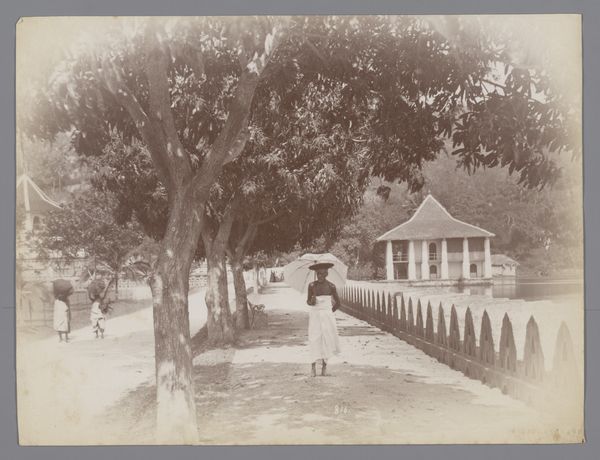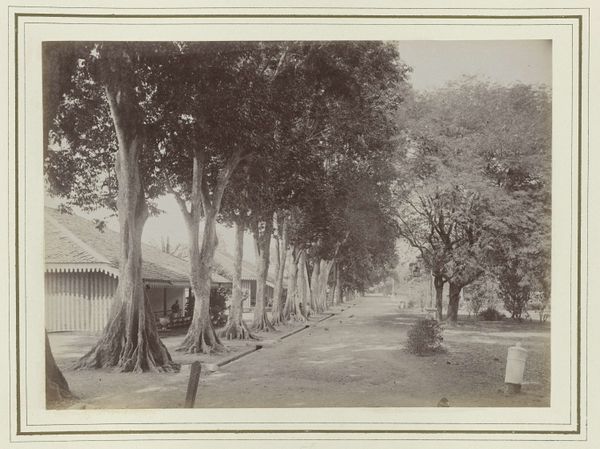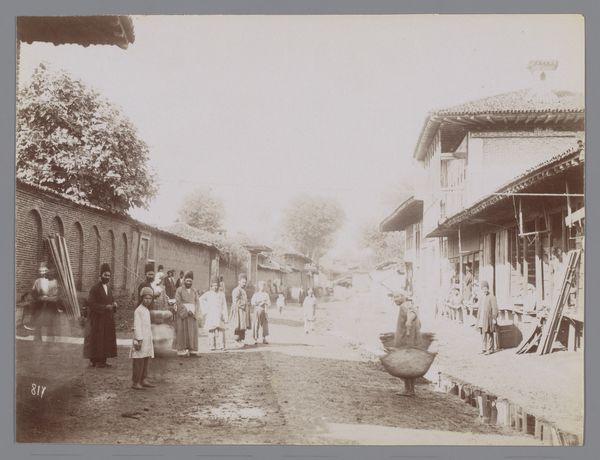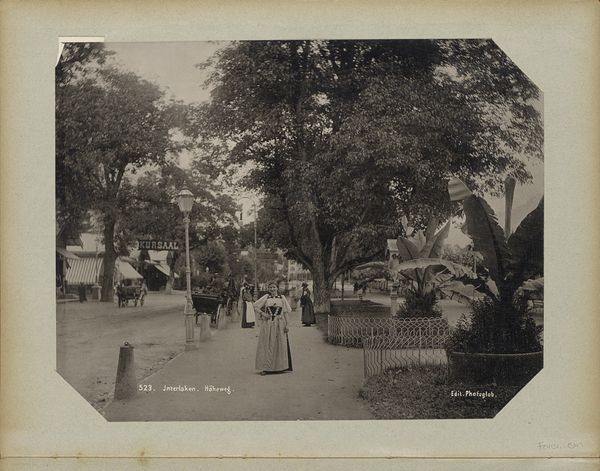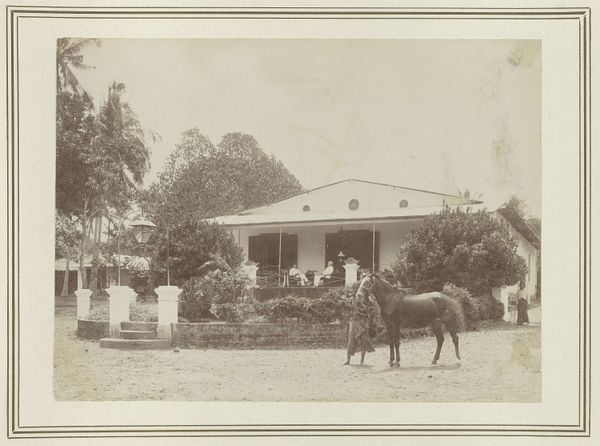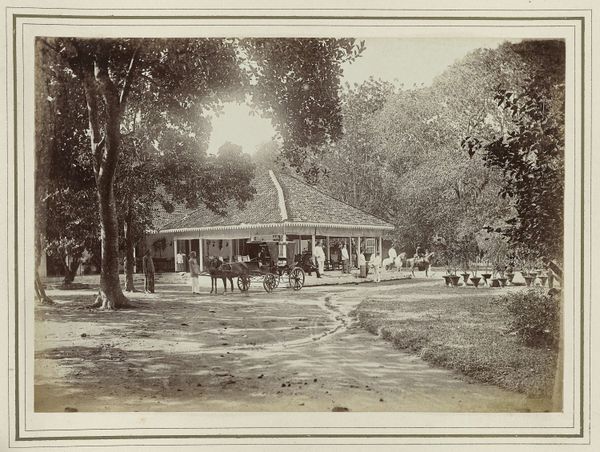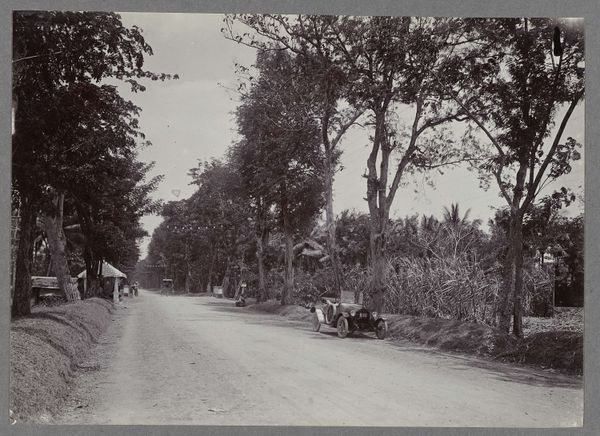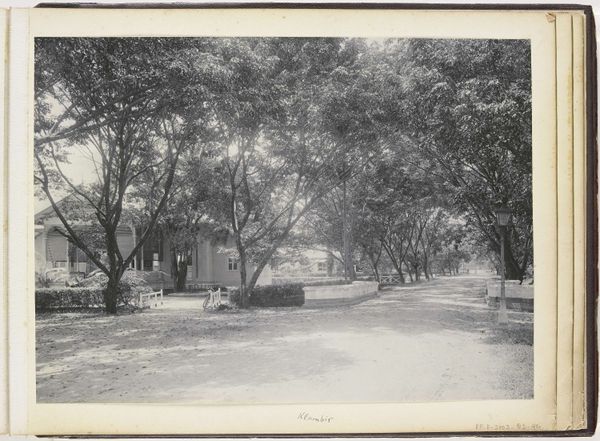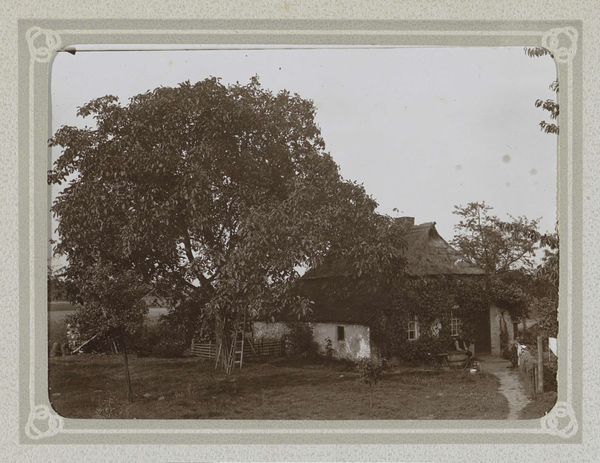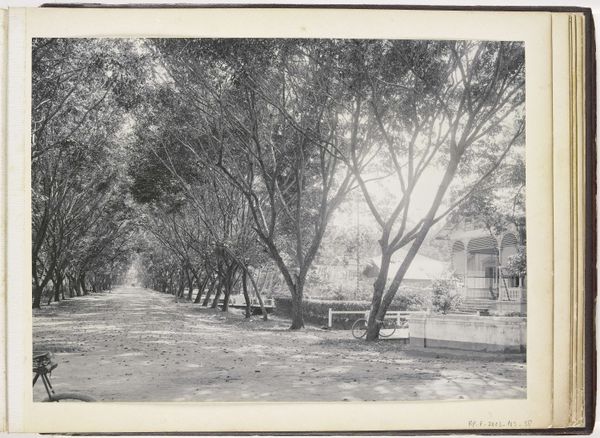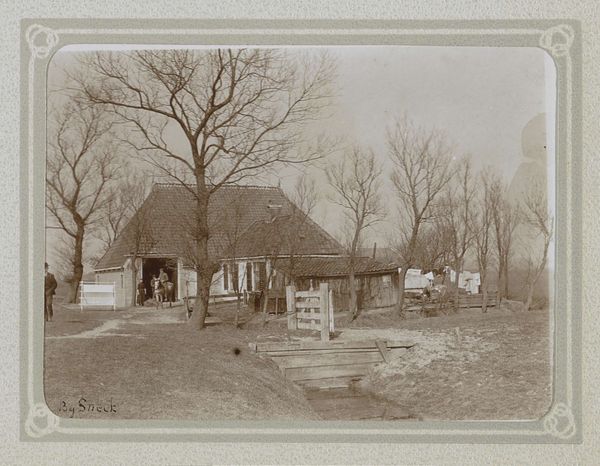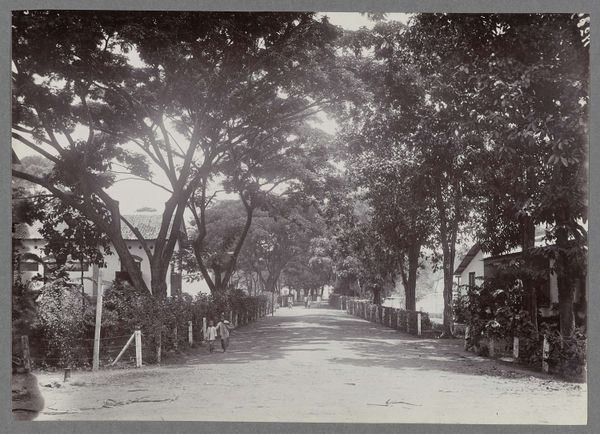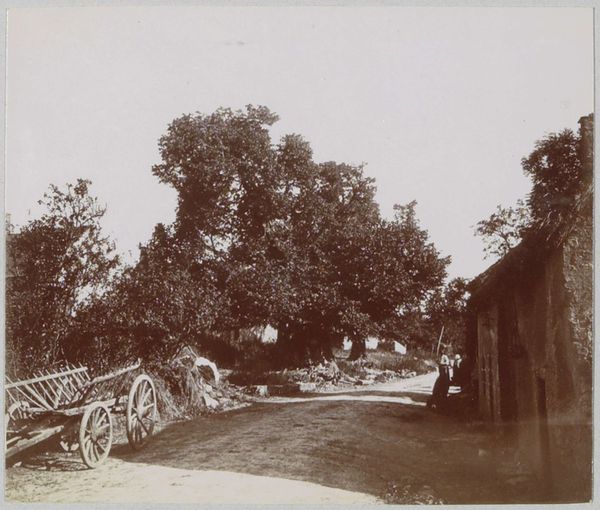
photography, photomontage
#
portrait
#
african-art
#
landscape
#
archive photography
#
photography
#
historical photography
#
photomontage
Dimensions: height 150 mm, width 210 mm
Copyright: Rijks Museum: Open Domain
Editor: Here we have "Gezin in koets," or "Family in a Carriage," a photograph taken around 1886, created by Kassian Cépas, and preserved at the Rijksmuseum. The tones are soft, almost dreamlike, and there's a formality to the grouping that I find interesting. What symbols jump out at you in this image? Curator: This image whispers volumes about colonial dynamics and status. The carriage itself, the attire of the figures within, these are clear visual markers of privilege within a specific historical context. Editor: I hadn't considered it in that light, I was more focused on it being a family outing of some kind. Curator: Look at where it's positioned in relation to the man standing by the horse. The positioning reinforces a subtle hierarchy, where the act of service is almost inherently embedded within the visual language. Notice how even the massive tree almost acts as a silent observer, a witness to these ingrained social structures. Don’t you think? Editor: That's insightful, particularly the tree as witness idea. I hadn't thought about it in relation to power, only as scenery. It’s difficult to escape our modern gaze, I think. Curator: Indeed. Now, considering it’s a photomontage…what new ideas does that spark about constructed realities and representations of that era? How much is real, and how much is a carefully curated scene? Editor: So it’s more staged, more deliberately shaped? That complicates things considerably. This conversation makes me rethink everything. Thank you! Curator: Precisely. Photography promised truth, but even then, it was capable of crafting elaborate fictions. It leaves you with a potent lesson, wouldn’t you agree?
Comments
No comments
Be the first to comment and join the conversation on the ultimate creative platform.
